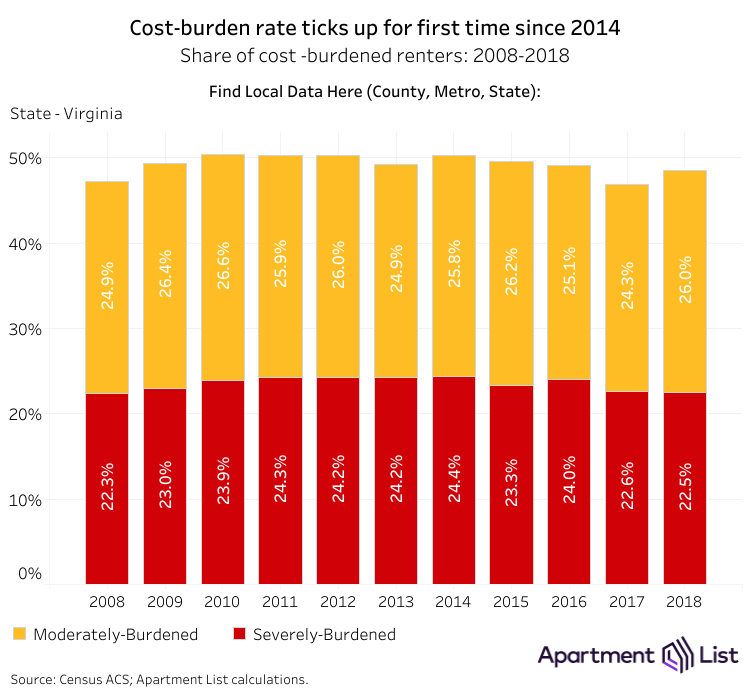This Halloween, there’s nothing scarier than more people spending too much on rent.
For the past decade, nearly half of Virginia’s renters have been paying more than they can afford for their housing. It’s time for more treats and fewer tricks for our housing cost burdened families.
The Rentonomics blog, published by Apartment List, recently released its 2019 Cost Burden report. Using 2018 American Community Survey data, it found several new trends.
For one, the proportion of rent-burdened households nationwide increased for the first time since 2014, by 0.2%. Rent burden had been slowly decreasing, but researchers determined that trend was due to more upper-income households (with greater ability to pay) joining the rental market.
From 2008 to 2018, the number of renter households earning more than $100,000 a year nearly doubled. Just 3.8% of those households were cost-burdened, while 84.1% of renter households earning less than $35,000 were cost-burdened.
In Virginia, 48.5% of renter households are cost-burdened—a 1.6% increase from 2017. In the Richmond and Virginia Beach areas, the rent burden proportion is even higher: 49% and 51.8%, respectively. The Virginia community with the highest rent burden proportion is Martinsville, at 54.7% in 2018.
So what led to last year’s increase in rent burden? For the first time since 2011, median rents actually increased faster than the median renter’s income nationwide.
Don’t want to miss a post? Sign up here to get the microblog delivered directly to your inbox every Thursday.
